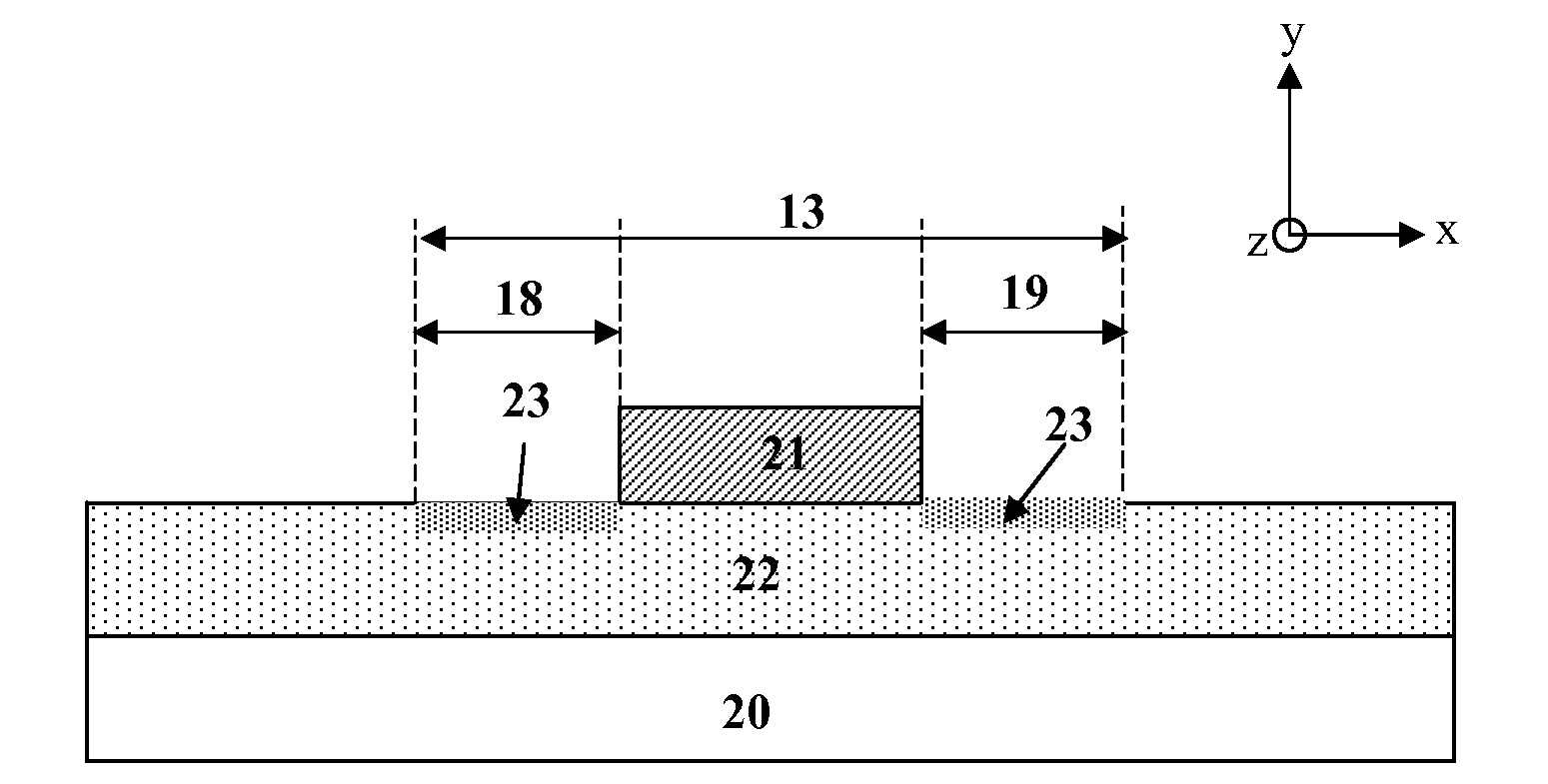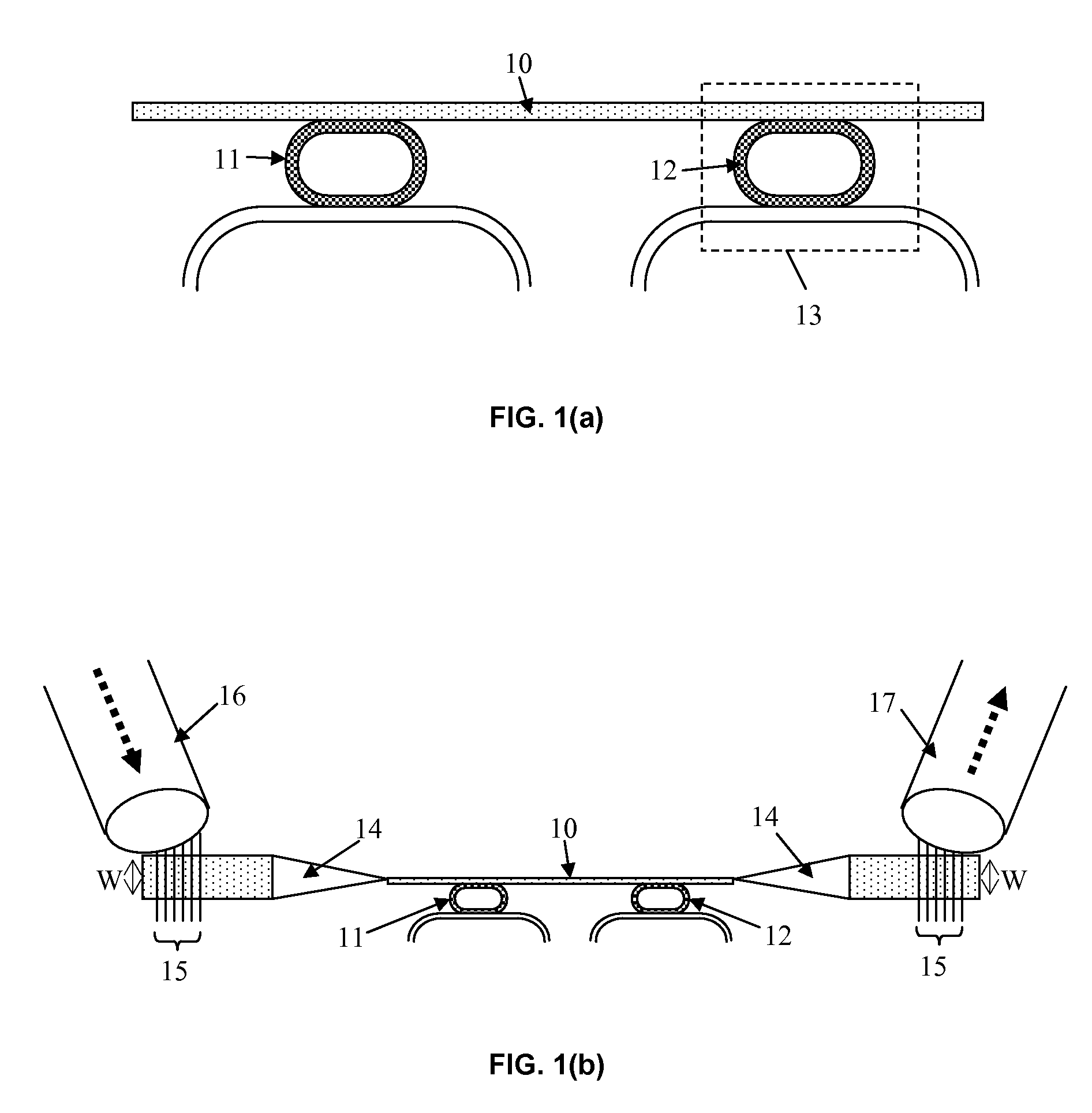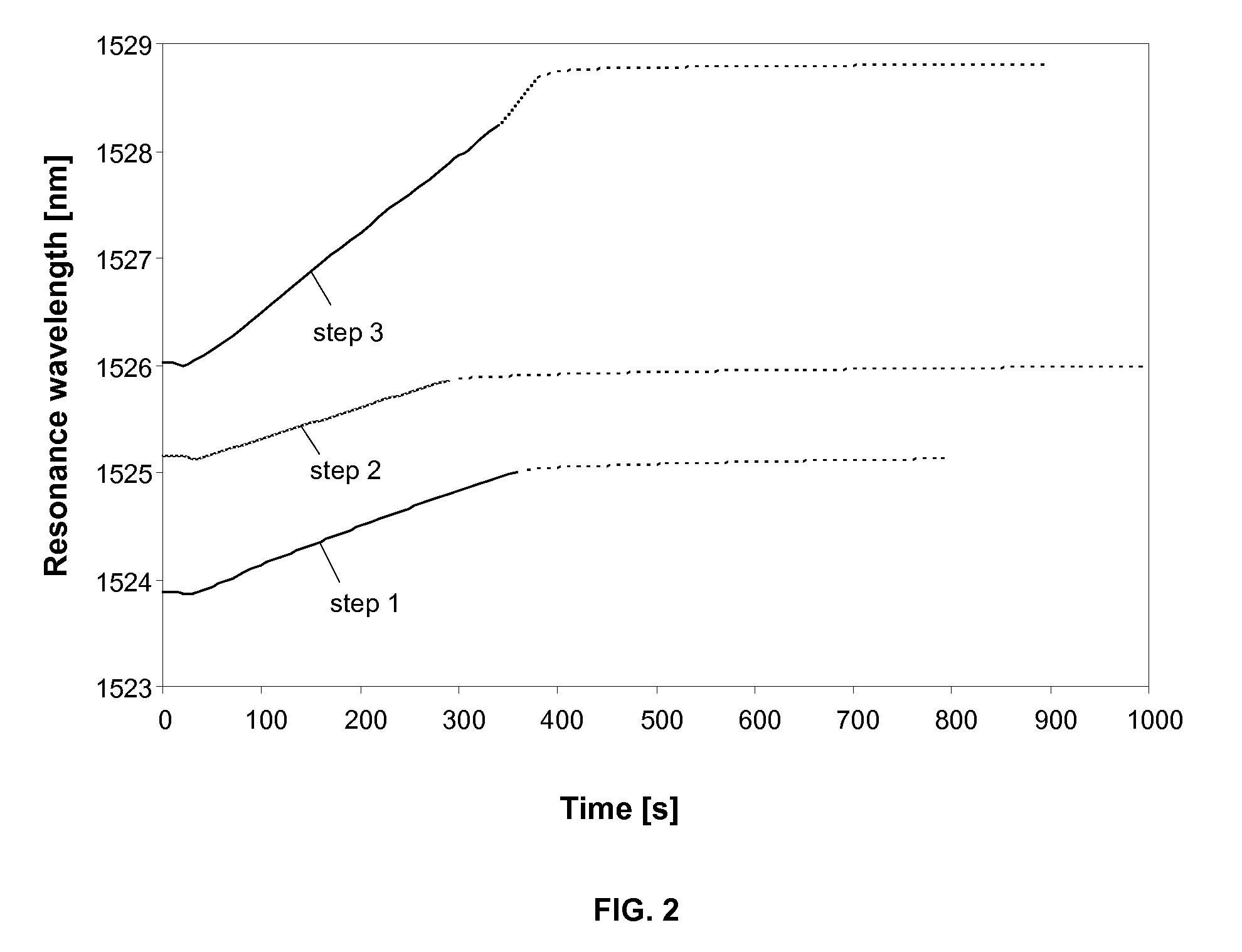[0014]The present disclosure is particularly useful for
effective refractive index trimming of optical waveguiding structures formed in a material
system wherein the light guiding layer or core layer is not susceptible to compaction by
irradiation, such as for example compaction by UV
irradiation or by
electron beam
irradiation, although the disclosure is not restricted thereto and can also be applied to systems wherein the core material is a compactible material. The method of the present disclosure can for example be used for post-fabrication trimming of an effective refractive index of optical waveguiding structures formed in a material system with a large difference in refractive index (e.g. difference in refractive index>1) between a core material and a cladding material, for example a material system comprising a cladding material such as SiO2, SiN, SiON, Al2O3, TiO2, spin-on glass or
borophosphosilicate glass and a core material such as
silicon, InP, GaAs or ZnS, such as e.g. a silicon /
oxide material system. The method allows local and independent trimming of an operating wavelength, e.g.
resonance wavelength, of optical components on a
chip and it allows compensating for operating wavelength variations, e.g.
resonance wavelength variations.
[0015]According to the disclosure, it has been found that by compaction of the cladding material in a compaction area next to patterns or ridges that are formed in the core material for realizing an optical waveguiding structure, the effective index of
refraction of the optical waveguiding structure can be trimmed and thus the operating wavelength of an optical component comprising such an optical waveguiding structure can be trimmed. Compaction of the cladding material can for example be done by means of
electron beam irradiation,
ion beam irradiation or by UV irradiation. Due to the limited light confinement in the cladding layer, the trimming range for e.g. the
resonance wavelength of an optical component such as a ring
resonator is expected to be very limited (<1 nm). However, it was surprisingly found that the trimming range can be greatly increased (>5 nm) by compacting the cladding material next to (so not underneath) and at both sides of the patterns or ridges defined in the core material for forming optical components. In this context, the cladding material next to the ridges refers to a volume of the cladding material that, after orthogonal projection of the structure on a
plane parallel to the cladding surface, would be adjacent to (i.e. touching or near or close to) and not overlapping the ridges. By appropriate selection of the irradiation energy, i.e. using an irradiation energy that is sufficiently low for preventing penetration of the
radiation through the core layer, the volume compaction can be restricted to the cladding material next to the ridges of core material. In other embodiments the volume compaction can be restricted to the cladding material next to the ridges by shielding the ridges from the irradiation. It has been found that compaction of the cladding material next to the ridges, at both sides of the ridges, causes
tensile strain in the core material. The
tensile strain results in a change in the refractive index of the core material, e.g. an increase in the refractive index in case the core material is silicon. In this case the effect of the cladding material compaction on the effective refractive index is thus strengthened by the strain it induces in the silicon core. Both effects can generate an increase in effective refractive index, which may for example result in a
red shift of an operating wavelength, e.g.
resonance wavelength, of an optical component.
 Login to View More
Login to View More  Login to View More
Login to View More 


